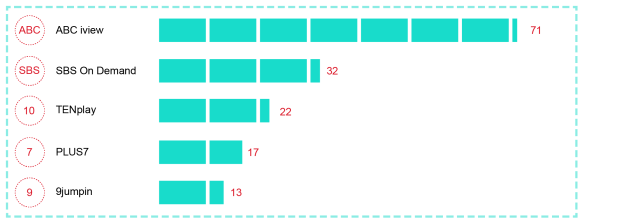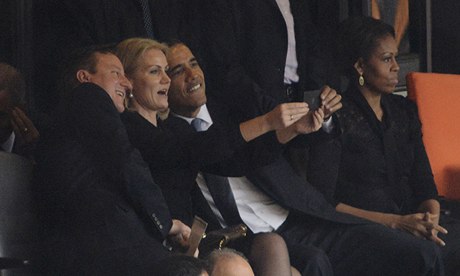
Classic anthropomorphism – A.A. Milne’s Winnie-the-Pooh. Source: Pinterest
Animals are all over our media. They’re in kids’ TV shows, films, documentaries and advertisements for everything from toilet paper to Bundaberg rum.
But what’s particularly interesting, is that in the media, animals are often portrayed as being almost human. This is largely because their appearance in the media is highly constructed – be it in a computer-animated film or a David Attenborough wildlife documentary.
Leane and Pfenningwerth explore this in relations to penguins in Considering Animals (2013, pp.29-40). In commenting on the many similarities between the documentary March of the Penguins and Happy Feet, they argue that both films anthropomorphise penguins – Happy Feet quite obviously with the creatures talking and tap-dancing, but also in March of the Penguins through the narration and choice of shots to include.

‘March of the Penguins’ and the ‘Happy Feet’ films combined in a DVD release. Source: Amazon
Like many animal documentaries and animated films before them, the two films were enormously popular, begging the question – why do we like to see animals as being just like us?
Pierson (2005, p.710) argues that while Discovery Channel documentaries do provide facts about the animals, they also have a tendency to impose human characteristics on them. He suggests that this is in order to engage the audience in the dramatic and emotional aspect of the documentaries. Pierson also speaks of the tendency in such documentaries to impose human social structures (such as family and capitalism) on the animals. Perhaps then, animals are anthropomorphised in the media simply so audiences care about them more.
Animals that act like people certainly seem to grab our attention more. In circuses, sea parks and zoos, animals are often taught to do human-like tricks, such as waving, shaking hands and even taking part in comic routines. Even if it’s highly constructed, we like seeing animals doing human things.
A brilliant and humorous example of this was when Australian comedians Hamish and Andy donned gorilla costumes and spent some time in an enclosure at a Melbourne zoo. Here’s what happened:
The spectators shown in the video are willing to believe the gorillas are real, perhaps partly due to having authority figure Dr Chris Brown speaking factually about them, but also perhaps because our media has conditioned us to be used to, and be attracted to, animals behaving like humans. The gorillas certainly seemed to be getting a lot of attention that day!
It’s interesting to look at which animals are typically anthropomorphised. It often seems to be those closest to humans in looks, the way they walk and how they move – and also those which are the cutest. Thus penguins, monkeys, meerkats, bears, parrots, dogs and turtles are all quite common in cartoons, Hollywood films, advertisements and documentaries. Rats, dung beetles and other less attractive creatures are less likely to make an appearance.

Just some of Disney’s classic animal characters. Source: http://i.imgur.com/RXe43QN.jpg
But it seems we don’t respond too well to animals that are portrayed as extremely human-like. Miles and Ibrahim (2013, p.1876) cite the backlash that ensured when South African company Vodacom used the very human-like Mo the Meerkat – one member of the public even uploaded a YouTube video which portrayed the character being killed!

Mo the Meerkat, once of the face of South Africa’s Vodacon. Source: Mybroadband.co.za
Miles and Ibrahim write: “The Mo character failed to emotionally connect with the audience because it did not follow the rules of effective fabular anthropomorphism; its ‘animality’ was almost unidentifiable, and thus it was too human.”
So we and our media seem to engage with animals that are portrayed as human, but not too human. I think this is because we are generally interested in those like us – and so the animals that we find most mesmerising are those who are just like us, or at least appear to be. We also like to watch animals that are cute and attractive-looking, which is not surprising.
But is all this anthropomorphising a good thing? It does seem strange that in an increasingly urbanised society, where we’re moving away from farms and wild animals, that we are exposed to representations of animals more than ever. So we’re seeing more highly-constructed portrayals of animals, and less and less of the real thing.
A 2014 study by Ganea et al found that children exposed to anthropomorphic representations of animals as opposed to those exposed to factual accounts were less able to answer questions about the animals.
The conclusion reached was that children should be exposed both to anthropomorphic animals, and real-life animals.
Perhaps the same should be true for all of us.
Bibliography:
Ganea, P et al, 2014, ‘Do cavies talk?: The effect of anthropomorphic books on children’s knowledge about animals’, Frontiers in Psychology, vol.5, no.283.
Leane, E & Pfenningwerth, S 2013, ‘Marching on Thin Ice: The Politics of Penguin Films’, in C Freeman (ed.), Considering Animals, Ashgate, Farnham, pp.29-40.
Miles, C & Ibrahim, Y 2013, ‘Deconstructing the meerkat: fabularanthropomorphism, popular culture, and the market’, Journal of Marketing Management, vol.29, nos.15-16, pp.1862-1880.
Pierson, DP 2005, ‘“Hey, They’re Just Like Us!” Representations of the Animal World in the Discovery Channel’s Nature Programming’, Journal Of Popular Culture, vol.38, no.4, pp. 698-712
Tufnell, N 2014, Anthropomorphised animals can confuse children, Wired.co.uk, viewed 24 March 2016, <http://www.wired.co.uk/news/archive/2014-03/28/anthropomorphised-animals-can-misinform-children>


















